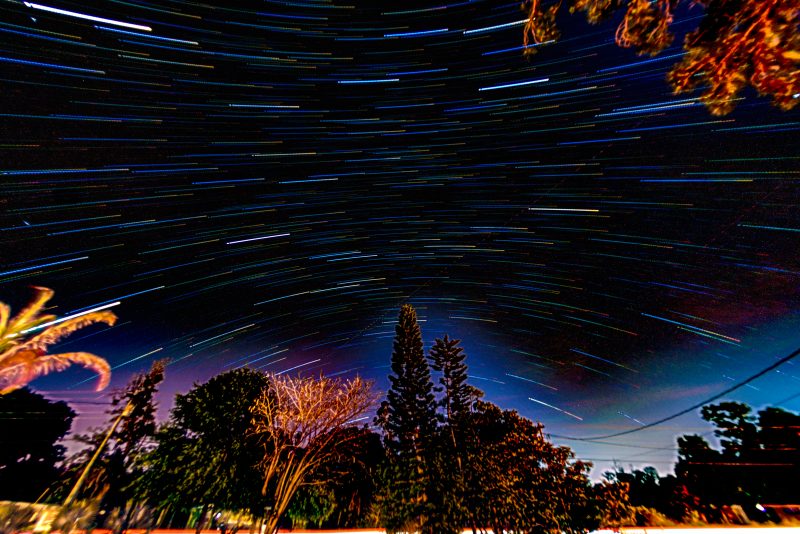

View larger. | Photo by Art Robertson
Art Robertson in Sebring, Florida created this composite image from photos taken April 18, 2018. He wrote:
In the upper part of this image, stars north of the celestial equator appear to circle the north celestial pole (which is out of the top of the frame). Stars in the lower part of the photo appear to circle the south celestial pole (which is below the horizon and out of the bottom of the frame). In the middle, stars near the celestial equator seem to move in straight horizontal lines.
Nikon D800 camera, Nikon 16 mm f/2.8 fisheye lens, tripod, looking south from latitude 27.5 degrees North. Forty-two minutes total exposure at f/4, ISO 400.
Thank you, Art!
Read more: What are star trails, and how can I capture them?
Bottom line: Composite image – acquired with a fisheye lens, showing the celestial equator and the arc of stars around both celestial poles.
from EarthSky https://ift.tt/2HlbGfc


View larger. | Photo by Art Robertson
Art Robertson in Sebring, Florida created this composite image from photos taken April 18, 2018. He wrote:
In the upper part of this image, stars north of the celestial equator appear to circle the north celestial pole (which is out of the top of the frame). Stars in the lower part of the photo appear to circle the south celestial pole (which is below the horizon and out of the bottom of the frame). In the middle, stars near the celestial equator seem to move in straight horizontal lines.
Nikon D800 camera, Nikon 16 mm f/2.8 fisheye lens, tripod, looking south from latitude 27.5 degrees North. Forty-two minutes total exposure at f/4, ISO 400.
Thank you, Art!
Read more: What are star trails, and how can I capture them?
Bottom line: Composite image – acquired with a fisheye lens, showing the celestial equator and the arc of stars around both celestial poles.
from EarthSky https://ift.tt/2HlbGfc

Aucun commentaire:
Enregistrer un commentaire